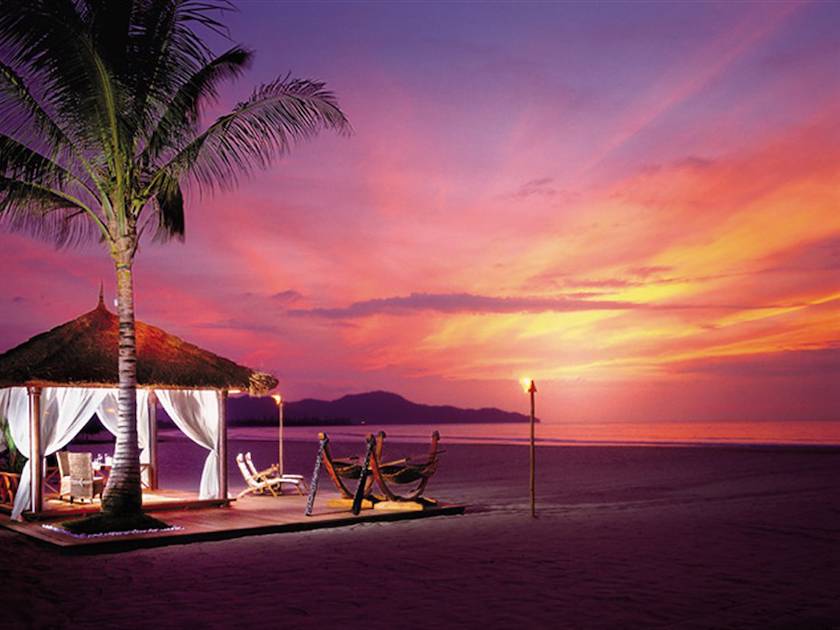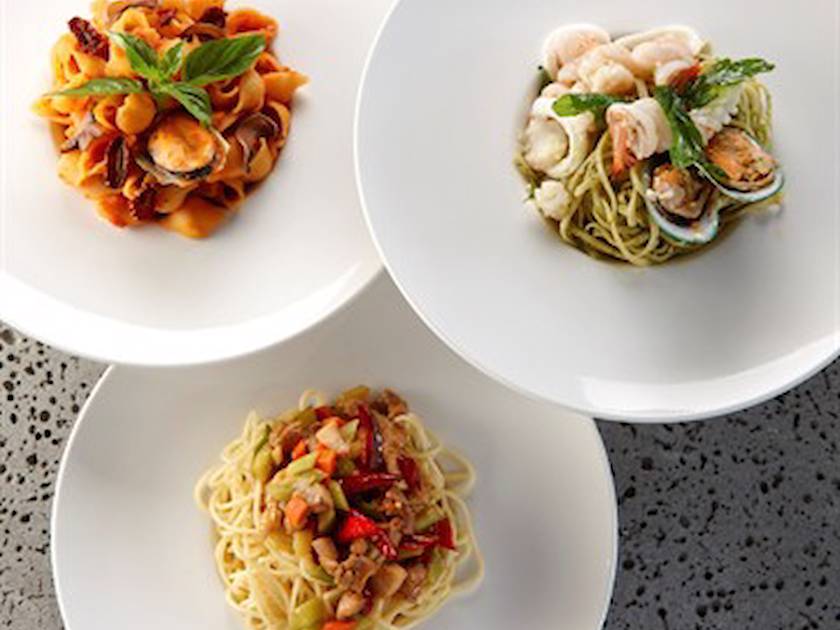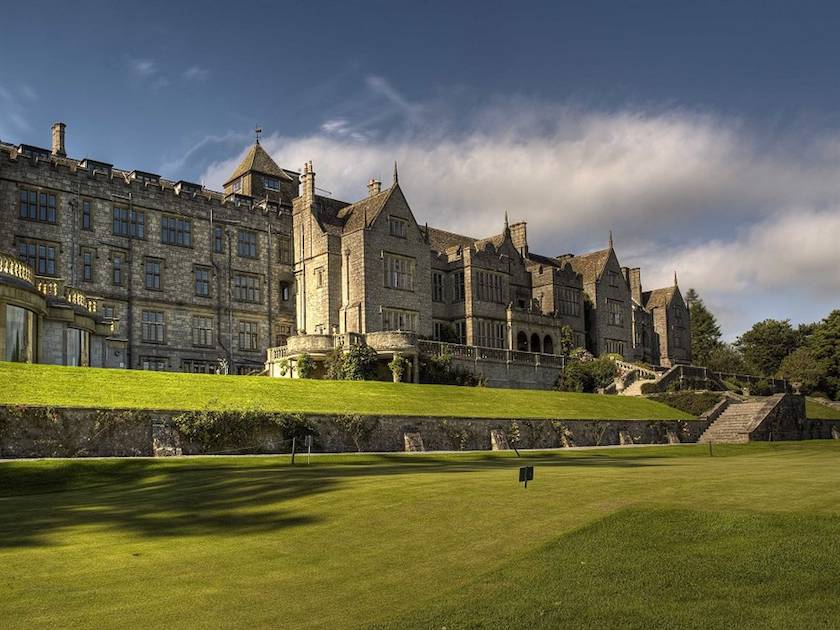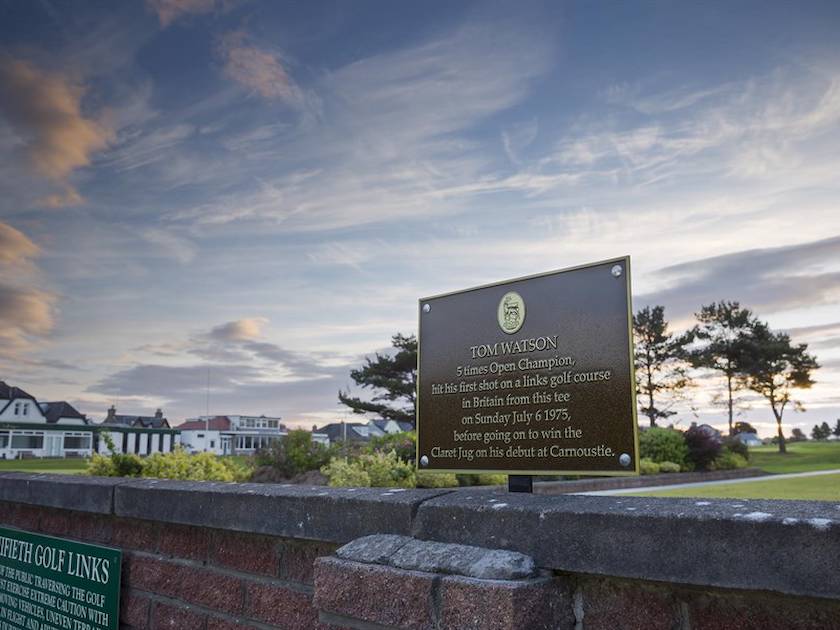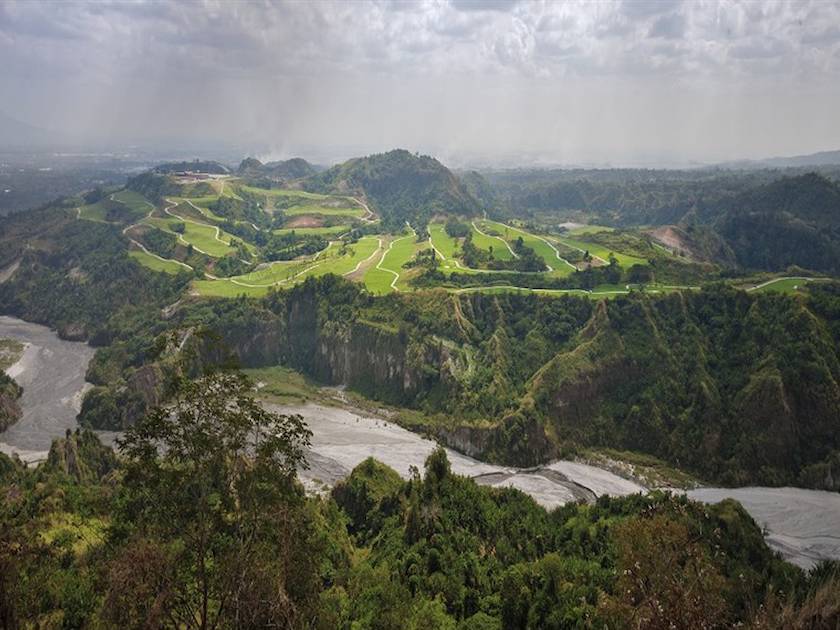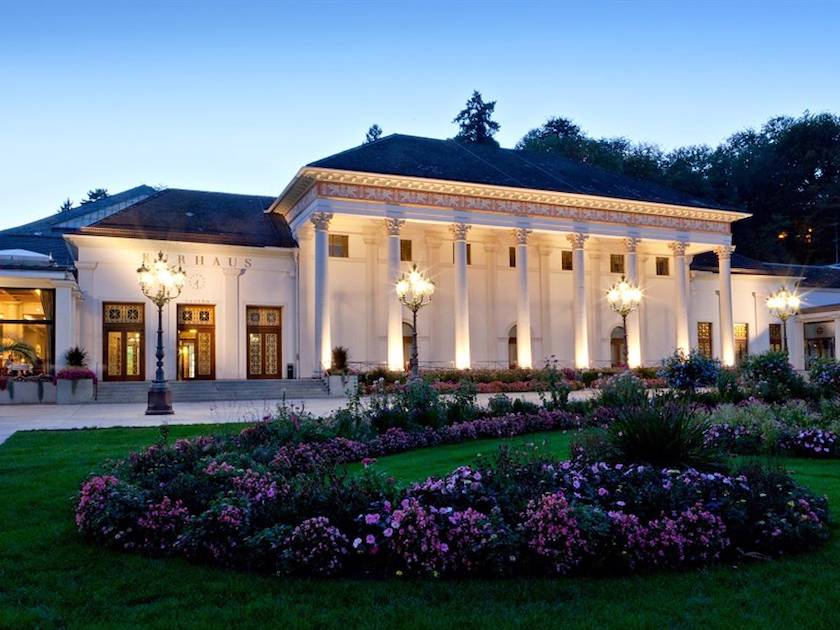Sri Lanka - Finding your Shangri-La
For golfers wanting a totally tropical getaway, luxury hotel chain Shangri-La – named after the fictional paradise on earth – has two five-star golf resorts in Indian Ocean destinations Sri Lanka and the Maldives that can be combined on a holiday, as Peter Ellegard discovers.
It isn’t every day that you play golf with a national sporting hero – let alone give him some coaching tips. Yet here at Shangri-La’s Hambantota Golf Resort & Spa, Sri Lanka’s only golf resort, I’m playing as a guest in a four-ball with the country’s former cricket captain, Angelo Matthews, and helping him after he asks for advice from me – a perennial 23-handicap hacker! Captain of Sri Lanka’s cricket team for five years until resigning in July, he is a golfing newbie. And our two playing partners are just as inexperienced.We are the final, non-competitive group in a tournament for HSBC Premier members on the Indian Ocean island being held by HSBC Sri Lanka. The organisers also invite me to play in a fun night golf event, pitching over a pond to the floodlit 18th green. And I am welcomed as a guest at the gala awards dinner. There is an expectant air as the last groups in the tournament proper are getting their rounds under way, with rumours of an appearance by a special guest from the cricket world. With just minutes to our tee time, he arrives.
PEACOCK PARADISE. Tall and good looking, Angelo warmly greets me as we all make our introductions. The tournament competitors are all walking with their caddies. We also have caddies but are allowed buggies, for which I am very grateful in the late-morning sweltering heat and humidity. Opened in October 2016, the 6,100-yard, par 70 Rodney Smith design is a resort course but a testing layout. Long savannah grass rough and 4,000 tall palm trees edge the fairways and greens, it has 15 lakes and 15,000 pineapples grow alongside several back nine holes, while there’s a constant wind off the adjacent Indian Ocean. The first hole, Peacock Paradise, is named for the peacocks that often meander across it. We echo their mournful calls as we all miss the wide fairway. With no idea how far each club can hit, Angelo asks me which one he should use. That sets the tone for our game; Angelo in and out of the rough and unsure about club selection, while I scramble bogeys. On the 375-yard, par-4 5th hole, he smashes the cricket equivalent of a straight six to leave a short chip over a bunker. As I near him, having hit my 170-yard approach onto the green, he asks if he should use his 6 iron. “I wouldn’t,” I advise, “unless you want to put your ball through a hotel window…” Following my suggestion he hits sand wedge – straight into the bunker, from which he takes three shots to escape. But he doesn’t stare accusingly at me like a batsman after being bowled a bouncer, nor does he sledge on my birdie attempt.
SOUTH COAST. We finish after seven holes so as to make lunch. It has been fun, and hopefully I have given Angelo some helpful pointers. All cricketers excel at golf. For a beginner he shows amazing aptitude and with proper tuition could quickly become a low handicapper. Next day I manage a full round when the resort’s director of golf, Romain Pourveer, challenges me to a game. There’s no money at stake, just pride. And that spurs me. Suddenly I’m more comfortable with my rental Titleist clubs, driving straight, hitting irons well and putting solidly, while he is tired and misfiring after orchestrating yesterday’s competition. I beat him 6 and 5 on the 12th hole, before we draw a rematch on the remaining holes. Sri Lanka has four 18-hole layouts but this is the only one on the south coast. Both Royal Colombo Golf Club, in the capital, and Nuwara Eliya golf Club, in the hill country, are four to five hours away by road and the Victoria Golf and Country Resort, near Kandy, is even farther away. You can’t base yourself in one place and play every course. But Sri Lanka lends itself to a touring golf and sightseeing holiday, while November’s opening of Shangri-La’s second Sri Lanka property, a 500-room city hotel in Colombo, makes a twin-centre stay with Hambantota a good option.
DIRECT FLIGHTS. You can also twin Hambantota with Shangri-La’s Villingilli Resort & Spa in the Maldives. It is located on Addu Atoll, the archipelago’s southernmost atoll, and direct flights link Colombo with Gan, a former RAF base just a five-minute boat ride away. What’s more, it boasts the Maldives’ only golf course, albeit a nine-hole par 30. I opt to add on a few days there. First, however, I spend time enjoying Shangri-La’s sumptuous Hambantota resort and nearby attractions. Among the first beach hotels in this developing tourism area, the resort is Sri Lanka’s largest, offering 300 rooms, all with free Wi-Fi, cable TV, bathrobes and slippers. My room looks out past tall coconut palms to the ocean. Adjoining the hotel, the Kadamandiya artisan village’s thatched studio huts house local artisans who make and sell their works, including paintings, pottery, sculptures and carvings. The resort’s CHI, the Spa has 12 indoor and outdoor treatment rooms offering Chinese massages plus Sri Lankan ayurvedic treatments. I enjoy a soothing, hour-long ayurvedic massage after a medical consultation to determine the best oils for me. Beforehand, my masseur, Visula, pours hot water into a bowl with cinnamon and neem (Indian lilac) tree leaves for me to soak my feet. Bliss…
ELEPHANTS AND CROCODILES. Hambantota appeals to families and couples alike. Amenities include three outdoor pools, children’s facilities and activities, jogging trails, health club, mountain bike rental and a long sandy beach. Guests can also learn circus skills on a seven-metre-high trapeze. Among four restaurants and bars, the Ulpatha doubles as the golf clubhouse. One morning I’m up at 4.45am for a dawn safari trip to Udawalawe National Park, an hour away. Home to 500 elephants, during September and October it’s a great alternative when Yala National Park – famous for its leopards – is closed to tourists. We see several elephants, with little ones in tow, besides peacocks, crocodiles, painted storks, monitor lizards, water buffalo and more. At the nearby Elephant Transit Home, where orphaned and injured young elephants are cared for before rehabilitation back into the wild, we watch feeding and bath time. An afternoon jungle boat safari along the Walawe River follows an exhilarating 20-minute tuk-tuk ride. My driver, Sisira, parks his red machine then helps crew the boat, slicing open fresh coconuts to slake our thirst after a walk to the beach where ocean meets river in thunderous surf. We spot many species of birds, from large owls and hawks to colourful kingfishers, and a huge roosting colony of fruit bats that suddenly take flight in a flurry of flapping wings, resembling a squadron of mini-pterodactyls. After a final dinner at the Sera restaurant a night transfer returns me to Colombo airport for the 90-minute, early-morning flight to Gan. My last Maldives visit was in 1989, since when tourism has rocketed. There are now more than 100 resort islands.
ROYAL WELCOME. Shangri-La’s Villingili Resort & Spa is the only resort in Addu Atoll and the only Maldives resort south of the equator. Opened in 2009, it is one of the Maldives’ most luxurious, with 132 villas including 60 water villas on stilts, plus tree house, pool and beach villas. I am welcomed royally after the short boat ride from Gan (they are used to real royalty here – Prince Andrew stayed recently and heads of state and royal guests regularly stay). Nihad, my island host (aka personal butler), drives me to my water villa by golf buggy. The villa is huge and well-appointed. It has free broadband internet, TV and DVD, indoor and outdoor showers, a sundeck and daybed, and steps down to the crystal-ceal, azure waters where two Moorish idol fish hang motionless. I could happily spend all my time here, but with 6km of coastline and 2km of white-sand beaches, Villingili is one of the largest Maldive islands, offering everything from water sports, a spa, floodlit tennis and golf to excursions to neighbouring islands. Each villa has its own bikes so you can roam the island. I play the golf course twice, once on my own – with tea served up on-course – and once, after breakfast watching the sunrise from a deck by the clubhouse, with Australian executive sous chef Dan, who has even introduced kangaroo to the menus! Skirting both coasts and with spectacular views, the course is very short, with only three par 4s and the longest holes less than 180 yards, but truly tests your short game. The long, tight 3rd has jungle one side and beach the other, while the tee shot on the par-4 5th is over beach and ocean. Dan and I both come up short, watching helplessly as waves claim the Titleist Pro V1 balls recreation manager Abdul Manaf has provided with our rental clubs.
HIGHEST POINT. The 8th hole’s elevated tee is Mount Villingili, officially the Maldives’ highest point at 5.1 metres high. That underlines the peril this tropical island nation faces from rising sea levels. That evening I’m back atop the “mountain” for an intimate Dine by Design candlelit dinner with communications manager Aishwarya Devaiah. Villingili has three restaurants, with Dr Ali’s restaurant also offering a choice of Chinese, Arabic or Indian cuisine, but you can dine al fresco in several locations, among them the beach, the chef’s garden, on a chartered luxury yacht trip to the equator or in your own villa. For romantics, there are five wedding and blessing locations, from beaches to jungle and even underwater. Villingili’s underwater treasures are its star attraction. The reefs both in the lagoon and outside the atoll escaped the coral bleaching that devastated much of the Maldives in 2016. I join a morning snorkel trip on the house reef and am enthralled by seeing seven turtles and healthy staghorn, table and other corals alive with multi-coloured reef fish – clown fish, trigger fish, parrot fish, napoleon wrasse and others. A blacktip reef shark glides under the boat as I climb back aboard.
UNDERSEA WONDERLAND. An experienced and ardent BSAC diver in my youth, I dive Villingili’s south house reef with Portuguese instructor Juan Contente. Instantly I’m transported to an undersea wonderland as we glide past towering coral heads, exploring nooks and crannies and seeing schools of oriental sweetlips, blue surgeons, batfish, Moorish idols and large trevally, plus another seven turtles. After 50 minutes and a maximum depth of 15.4 metres, we take a four-minute safety stop before returning to the boat. At the Eco Centre, guests can learn about marine life including turtles that nest on the island, and plant coral for the underwater coral garden. They can also try climbing a palm tree to pick coconuts and explore a nature trail through the jungle. Villingili has its own unofficial time zone, an hour ahead of the Maldives, for guests to enjoy the glorious sunsets before dinner. I momentarily forget the time shift and am late for my spa appointment. In my haste I don’t see an ornamental rock pool in the reception area, sprawling headlong into it and, as the island’s doctor later confirms, cracking a rib. I still have the signature Kandu Boli Ritual coconut oil treatment, my masseuse singing a Maldives lullaby as she gently strokes me using heated cowrie shells and. It is very calming – until I ask her to gently massage the injured area and a bolt of pain hits me. My rib is now healed, but I need to return to Villingili and Hambantota for a rest cure. They truly are my Shangri-La.
GETTING THERE
Fly directly from London Heathrow to Sri Lanka capital Colombo with SriLankan Airlines (www.srilankan.com). Guests are picked up by the hotel’s airport butler minibus service for the journey to Shangri-La’s Hambantota Golf Resort & Spa, which takes four to five hours. For Shangri-La’s Villingili Resort & Spa in the Maldives, direct flights take around 90 minutes from Colombo (four times a week) and 70 minutes from Maldives capital Male (several daily) to Gan, a former RAF base on Addu Atoll. Villingili is a five-minute speedboat ride from Gan.
WHEN TO GO
For southern Sri Lanka, May to July is the south-west monsoon season and is the wettest, with March to October the windiest period. November to January is the north-east monsoon season, when this part of the island is calmer and drier. You can generally swim in the sea between November and March. Sri Lanka is one of the best places in the world for whale-watching and boats go from Mirissa, two hours from Hambantota, to see whales including humpbacks and blue whales from November to April.
In the Maldives, the driest season and the best time to go for diving is between January and April. The main monsoon season is June to September, with August and September the wettest months.
WHERE TO PLAY AND STAY
Shangri-La’s Hambantota Golf Resort & Spa, Sri Lanka www.shangri-la.com/hambantota/shangrila
Shangri-La’s Villingilli Resort & Spa, Maldives www.shangri-la.com/male/villingiliresort









